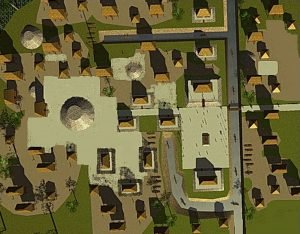Achiligonan Tribe
Achiligonan Indians. A tribe or band living between 1640 and 1670 on the north shore of Lake Huron, about the mouth of French river and westward nearly to Sault Ste Marie. In 1670 they were attached to the mission at the Sault. In the Jesuit Relation of 1640 their position is given on the north shore of Lake Huron, at the mouth of French river. The Amikwa are mentioned in the same connection as residing on this stream. In the Relation of 1658 they appear to be placed farther north on the river, and it is stated that they trailed … Read more

